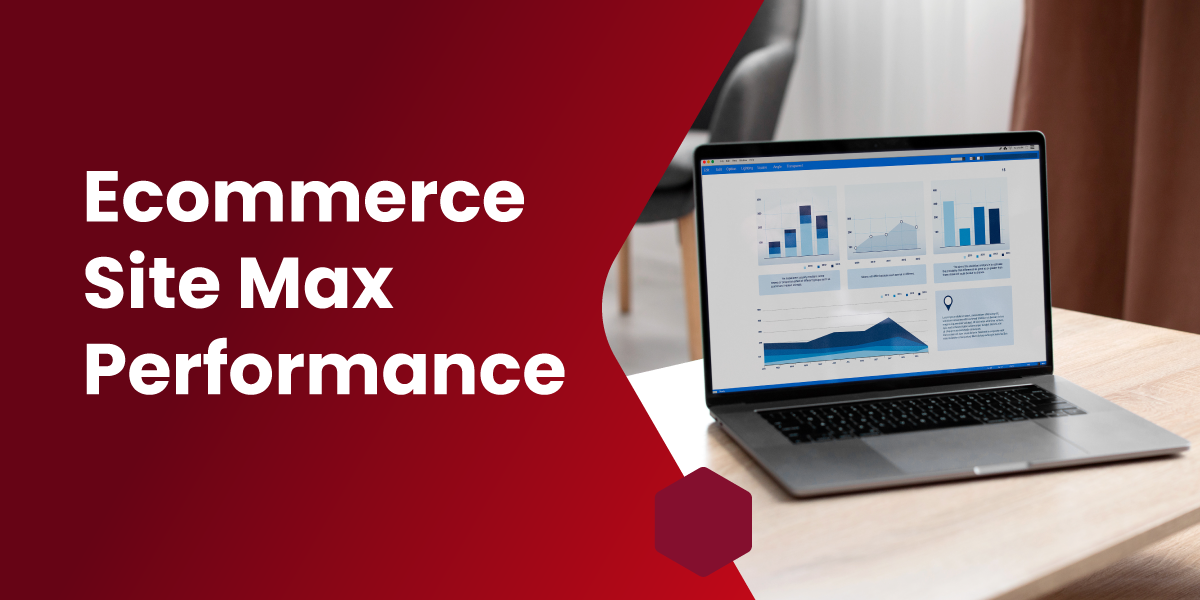Optimizing Your Ecommerce Website: Strategies for Maximum Performance
Having an optimized ecommerce website is crucial for the success of your business. With the increasing number of online shoppers, it is essential to ensure that your website performs at its best to attract and retain customers. This article will guide you through the strategies and techniques to optimize your ecommerce website for maximum performance.
Alt
Understanding Ecommerce Website Optimization
Before diving into the strategies, let's first understand the importance of ecommerce optimization. An optimized website not only improves user experience but also helps in search engine rankings, leading to increased visibility and organic traffic. By optimizing your ecommerce website, you create a seamless and efficient shopping experience for your customers, ultimately driving higher conversion rates and revenue.
When it comes to ecommerce, competition is fierce. With countless online stores vying for attention, it's crucial to stand out from the crowd. Ecommerce optimization plays a pivotal role in your online business success. An optimized website offers a user-friendly interface, faster load times, and streamlined navigation, making it easier for customers to find and purchase products. Additionally, optimization improves your website's visibility in search engine results, making it more likely to attract potential customers and increase organic traffic.
Imagine a customer searching for a specific product on a search engine. An optimized ecommerce website will have a higher chance of appearing on the first page of search results, increasing its visibility and attracting potential buyers. By investing time and effort into optimizing your ecommerce website, you establish a strong foundation for long-term growth and profitability.
Key Elements of an Optimized Ecommerce Website
When it comes to optimizing your ecommerce website, several key elements contribute to its overall performance. These elements include website speed, user experience, and search engine optimization (SEO).
- Website speed: Slow-loading websites frustrate users and increase bounce rates. By optimizing your website's speed, you ensure that users can access your products and content quickly, leading to a positive user experience and improved conversion rates.
Website speed is crucial in today's fast-paced digital world. Research shows that if a website takes more than three seconds to load, users are likely to abandon it and look for alternatives. To optimize your website's speed, you can compress images, minify CSS and JavaScript files, and leverage browser caching. These techniques help reduce page load times and provide a smooth browsing experience for your customers. - User experience: A seamless and user-friendly interface enhances the overall experience for your customers. This includes clear navigation, intuitive design, and easy-to-use search functionality. By prioritizing user experience, you encourage repeat visits, boost customer satisfaction, and drive higher sales.
When a customer visits your ecommerce website, they should be able to navigate through different categories and products effortlessly. Clear and intuitive navigation menus, strategically placed search bars, and well-organized product pages contribute to a positive user experience. Additionally, incorporating user reviews and ratings can help build trust and credibility, further enhancing the overall shopping experience. - SEO: Search engine optimization is vital for increasing your website's visibility in search engine results. By incorporating relevant keywords, optimizing meta tags, and creating high-quality content, you improve your website's ranking and attract organic traffic.
Keywords play a crucial role in SEO. By conducting thorough keyword research, you can identify the terms and phrases potential customers are using to search for products similar to yours. Incorporating these keywords strategically throughout your website's content, meta tags, and product descriptions can help search engines understand the relevance of your website to specific search queries.
In addition to keywords, high-quality content is essential for SEO. Creating informative blog posts, product guides, and tutorials not only provides value to your customers but also attracts organic traffic. When search engines recognize your website as a reliable source of information, they are more likely to rank it higher in search results.
Strategies for Ecommerce Website Optimization
Now that we understand the importance of ecommerce website optimization, let's explore some strategies to implement for maximum performance.
When it comes to enhancing website speed, there are several key tactics to consider. One effective approach is optimizing your images. By compressing image files and using the appropriate file formats, you can significantly reduce load times without sacrificing visual quality. Additionally, leveraging browser caching allows returning visitors to load your site faster by storing static files locally. Another important step is to minify CSS and JavaScript, removing unnecessary characters and reducing file sizes. Lastly, choosing a reliable hosting provider with fast servers and robust infrastructure is crucial for ensuring optimal performance.
Improving user experience is paramount for ecommerce success. One way to achieve this is by simplifying your website's navigation. A clutter-free and intuitive navigation menu allows users to easily find what they're looking for, reducing frustration and increasing the likelihood of conversions. Enhancing product search functionality is another crucial aspect.
Implementing advanced search filters and autocomplete suggestions can help shoppers quickly find the exact products they desire. Clear calls-to-action throughout the shopping journey, such as prominent "Add to Cart" buttons and easy checkout processes, also play a significant role in improving user experience.
Additionally, with the increasing number of mobile shoppers, prioritizing mobile responsiveness is essential. Ensuring that your website is optimized for mobile devices will provide a seamless experience across different screen sizes and boost customer satisfaction.
Implementing effective SEO strategies is crucial for driving organic traffic and increasing visibility in search engine results. To start, conducting thorough keyword research is essential.
Identifying relevant and high-ranking keywords for your products will allow you to optimize your product descriptions, titles, and image alt tags accordingly. By incorporating these keywords naturally and strategically, you can improve your website's visibility to potential customers. Building high-quality backlinks is another important aspect of SEO.
By earning links from reputable websites, you can increase your site's authority and improve its search engine rankings. Additionally, regularly updating your site's content with fresh and valuable information not only keeps your audience engaged but also signals to search engines that your website is active and relevant.
Mobile Optimization for Ecommerce Websites
In today's mobile-dominated world, optimizing your ecommerce website for mobile users is essential for success. With the increasing number of smartphone users, it is crucial to provide a seamless shopping experience across devices.
Mobile optimization has become a necessity for ecommerce websites due to the rise in smartphone usage. A mobile-responsive website ensures that customers can browse and purchase products conveniently, regardless of the device they are using. Neglecting mobile optimization can lead to frustrated users, high bounce rates, and missed opportunities for conversions.
Implementing a responsive design is one of the key strategies for mobile optimization. A responsive design allows your website to adapt to different screen sizes, ensuring that it looks and functions well on both smartphones and tablets. This flexibility in design ensures that your customers can easily navigate through your website and find what they are looking for.
Simplifying navigation is another important aspect of mobile optimization. Mobile users have limited screen space, so it is crucial to make it easy for them to find the information they need. Streamlining your navigation menu and organizing your content in a user-friendly manner can greatly enhance the mobile browsing experience.
Reducing page load times is also crucial for mobile optimization. Mobile users are often on the go and have limited patience for slow-loading websites. Optimizing your website's performance by compressing images, minifying code, and leveraging browser caching can significantly improve page load times and keep your mobile users engaged.
Ensuring that buttons and links are easily clickable on touch screens is another important consideration. Mobile users interact with websites using their fingers, so it is essential to have buttons and links that are large enough and well-spaced. This makes it easier for users to tap on them without accidentally clicking on the wrong element.
Optimizing images is also a crucial step in mobile optimization. Large, high-resolution images can slow down page load times and consume a significant amount of data for mobile users. Compressing images without compromising quality and using the appropriate image formats can help reduce file sizes and improve the overall performance of your website on mobile devices.
Lastly, minimizing the use of pop-ups is recommended for mobile optimization. Pop-ups can be intrusive and disruptive on smaller screens, leading to a poor user experience. If you must use pop-ups, ensure that they are designed to be mobile-friendly and do not hinder the browsing experience.
By implementing these strategies for mobile optimization, you can provide a seamless and enjoyable shopping experience for your mobile users. Remember, in today's competitive ecommerce landscape, catering to the needs of mobile users is crucial for the success of your online business.
Optimizing Ecommerce Website for Conversions
Converting website visitors into paying customers is a primary goal for any ecommerce business. Utilize conversion rate optimization techniques to maximize your website's potential.
Conversion Rate Optimization Techniques
A/B testing is a powerful technique to optimize your website for conversions. Test different layouts, calls-to-action, and headlines to identify the most effective elements that drive conversions. Additionally, simplify the checkout process and incorporate trust signals, such as customer reviews and secure payment options, to instill confidence in your potential customers.
Tracking and Improving Conversion Rates
Regularly track and analyze your website's conversion rates to identify areas for improvement. Utilize web analytics tools to gain insights into user behavior, identify bottlenecks, and enhance your website's performance. Continuously experiment with different strategies and monitor the impact on your conversion rates to ensure constant growth and success.
Maintaining an Optimized Ecommerce Website
Optimization is an ongoing process. To ensure your ecommerce website continues to perform at its best, follow these maintenance strategies.
Regular Website Audits
Perform regular website audits to identify any performance issues, broken links, or outdated content. Fixing these issues promptly ensures your website remains in optimal condition, providing an excellent user experience and maintaining search engine rankings.
Staying Updated with Ecommerce Trends
Stay current with the latest ecommerce trends and industry best practices. Subscribe to industry blogs, attend webinars, and participate in relevant forums to gain valuable insights. Keeping up with trends allows you to adapt your optimization strategies and stay ahead of the competition.
Continuous Performance Monitoring and Improvement
Consistently monitor your website's performance and seek ways to improve. Utilize tools that provide real-time analytics to identify performance issues or potential bottlenecks. By making continuous improvements, you ensure your website remains efficient, user-friendly, and competitive.
Conclusion
Optimizing your ecommerce website for maximum performance is a continuous process that requires dedication and attention to detail. By implementing the strategies and techniques mentioned in this article, you can create a seamless and efficient shopping experience that drives higher conversion rates, improves user satisfaction, and boosts your online business's overall success.

 Drive More Visibility, Traffic, and Sales
Drive More Visibility, Traffic, and Sales
